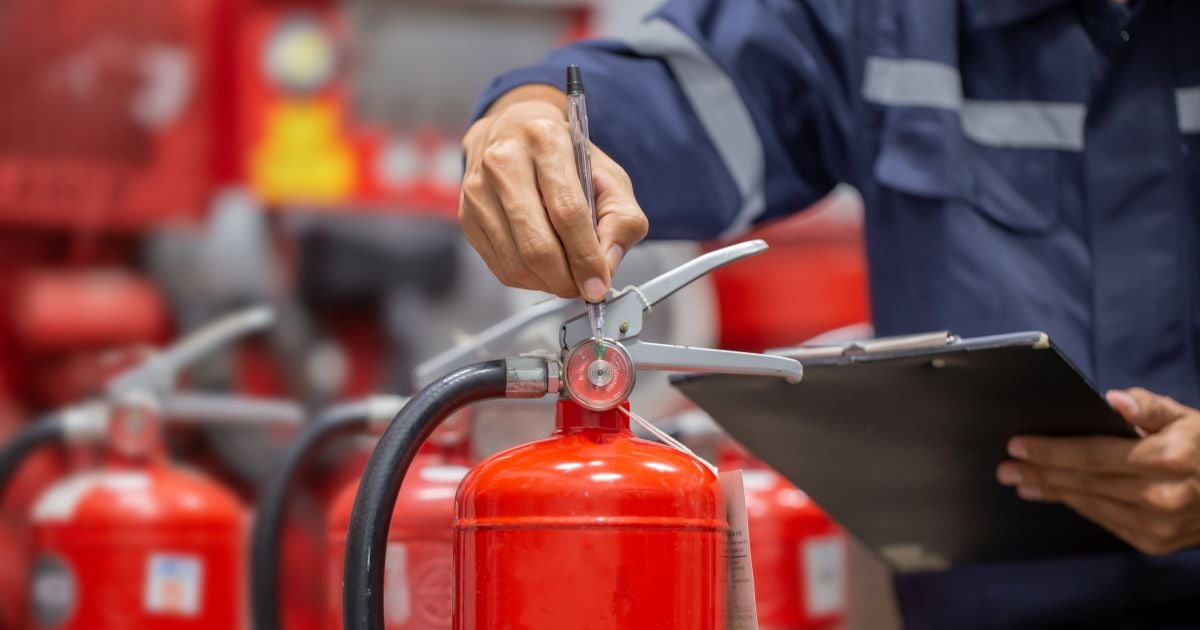The protection of fire is essential for any Sydney company. It’s not only an obligation under the law, but it’s an opportunity to keep the property, employees and customers secured. The risks that could arise from a fire can be prevented or reduced with the correct precautions. Inspections for fires, as well as regular checking of electrical systems, as well as compliance with CFSP standards all help to ensure a secure environment.

Why fire inspections are the backbone of safety
Fire Inspections are the first line of defense against potential hazards. These inspections confirm that the fire safety system in the building is up-to-date and functional. Businesses located in Sydney are required to carry out inspections at least six times a year, depending on the type of building and the regulations of the council. The inspections can cover everything from sprinklers to fire alarm systems, to smoke detectors, hydrants and extinguishers.
The ability to spot problems that are not obvious and correct them before they cause danger is what makes inspections important. In the event of an emergency, a small flaw in a smoke detector, or an unreliable fire hydrant could seem insignificant. The owners of businesses who regularly inspect their fire hydrants are fulfilling their legal obligations, and making themselves safe from unexpected catastrophes.
Testing and Tagging: Addressing Hidden Electrical Security
Electrical systems can be an important cause of fires at work. Testing and tagging are essential to a plan to ensure safety from fire. This involves checking electrical devices for safety, functionality and compliant, then placing a tag on the item to signify that the equipment has been inspected. For a lot of businesses it’s more than a routine requirement it’s a way to protect against potential risks that are often by unnoticed.
Incorrectly checked, worn-out or outdated cables, appliances with faults or wiring that is not up to date can quickly lead to fire hazards. By carrying out regular testing and tagging, businesses reduce the chance of electrical faults that can cause fires. This also assures employees that their environment is safe, creating trust and confidence within the workplace. Combining testing, tagging and fire inspections creates an extensive safety program that minimizes risks on multiple aspects.
The job of CFSP is compliance and certification
Only a Competent Fire Safety Professional (CFSP) who is located in New South Wales, can be a signer and certify important fire safety documents like Annual Fire Safety Statements. The introduction of CFSP certification has raised fire safety standards by ensuring only qualified professionals can review and verify the security. If business owners are working with a CFSP inspections and reports will no longer be merely a document, but rather an authentic evaluation conducted by professionals.
The work of a CFSP extends beyond the process of checking boxes. They assess the performance and condition of fire safety systems and present comprehensive reports. They also make sure that the system is in compliance with regulatory requirements. Without CFSP certification, businesses could face fines, legal complications, and even shutdowns if security measures for fire are judged to be inadequate. By partnering with professionals accredited in fire safety, you’ll be able to ensure that your equipment is maintained in a proper manner. Also, you’ll be able to meet compliance obligations without any unnecessary stress.
Safety in the Fire Service as an Ongoing commitment
Safety in the event of fire is not only a once-in-a-lifetime requirement, but rather an ongoing responsibility for each business owner. The process of ensuring safety will never end with regular inspections, testing of electrical systems constantly, and getting certification under CFSP supervision. Beyond the legal requirements the continuous approach creates a culture of safety within the workplace. Employees can be confident that evacuation plans have been developed and that smoke detectors are in operation and emergency lighting has been verified, and the fire suppression system is ready for use.
Fire safety is a continuous procedure, not a box which businesses must mark each year. This lowers the risk and strengthens the reputation of a company. Customers and clients feel more safe in a space which is highly rated for safety. In the long term, investing in preemptively to prevent fires saves money because it prevents expensive damage, fines and legal battles.
Conclusion
Safety in the event of fire in Sydney requires a multi-layered approach which includes fire inspections testing and tagging, and certified by a CFSP. Each of these elements is crucial to ensure that businesses are in compliance with the laws, and more importantly, that people and properties are protected. Safety is an integral aspect of the business process and is not a secondary consideration. Companies can fulfill their legal obligations and build more stable and secure setting in the future, if safety is a fundamental part of the daily routine.